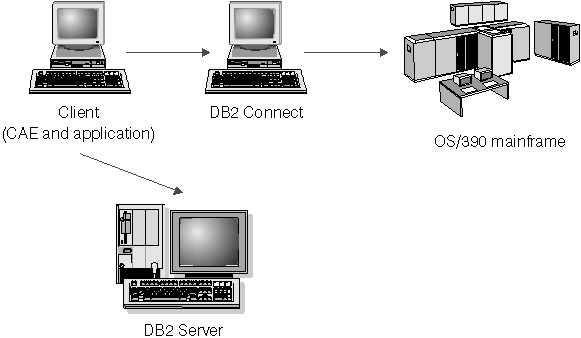
You should consider the following configuration parameters when you are setting up your environment. For additional information about setting these parameters, refer to the DB2 Connect User's Guide.
Figure 41. Configuration Considerations
 |
Database Manager Configuration Parameters
This parameter identifies the name of the Transaction Manager (TM) database for each DB2 instance.
This parameter identifies the name of the DB2 Connect sync point manager instance to the database manager. For resynchronization to be successful, the name must be unique across your network.
This parameter identifies the time interval (in seconds) after which the DB2 Transaction Manager, the DB2 server database manager, and the DB2 Connect sync point manager or the DB2 UDB sync point manager should retry the recovery of any outstanding indoubt transactions.
This parameter specifies the size (in 4 KB pages) of the SPM log file.
This parameter identifies the number of agents that can simultaneously perform resynchronization operations.
This parameter identifies the log path for the SPM log files.
Database Configuration Parameters
This parameter specifies the maximum permitted number of active applications. Its value must be equal to or greater than the sum of the connected applications, plus the number of these applications that may be concurrently in the process of completing a two-phase commit or rollback, plus the anticipated number of indoubt transactions that might exist at any one time. For more information about indoubt transactions, see Recovering from Problems During Two-Phase Commit.
This database configuration parameter specifies whether the RESTART DATABASE routine will be invoked automatically when needed. The default value is YES (that is, enabled).
A database containing indoubt transactions requires a restart database operation to start up. If autorestart is not enabled when the last connection to the database is dropped, the next connection will fail and require an explicit RESTART DATABASE invocation. This condition will exist until the indoubt transactions have been removed, either by the transaction manager's resynchronization operation, or through a heuristic operation initiated by the administrator. When the RESTART DATABASE command is issued, a message is returned if there are any indoubt transactions in the database. The administrator can then use the LIST INDOUBT TRANSACTIONS command and other command line processor commands to find get information about those indoubt transactions.
For more information about these configuration parameters, refer to the Administration Guide: Performance.
DB2 Universal Database does not support multisite update from the host or AS/400 database clients using TCP/IP connectivity. In this situation, only SNA (Systems Network Architecture) connectivity is supported. The DB2 sync point manager is required for multisite update. DB2 Connect is not used in this scenario.
The database server that is being accessed from the host or the AS/400 database client does not have to be local to the workstation with the DB2 sync point manager. The host or AS/400 database client could connect to a DB2 UDB server using the DB2 sync point manager workstation as an interim gateway. This allows you to isolate the DB2 sync point manager workstation in a secure environment, while the actual DB2 UDB servers are remote in your organization. This also permits a DB2 common server Version 2 database to be involved in multisite updates originating from the host or AS/400 database clients.
The steps are as follows:
db2icrt myinstance
You should be able to connect to the remote DB2 UDB servers from this DB2 UDB workstation.